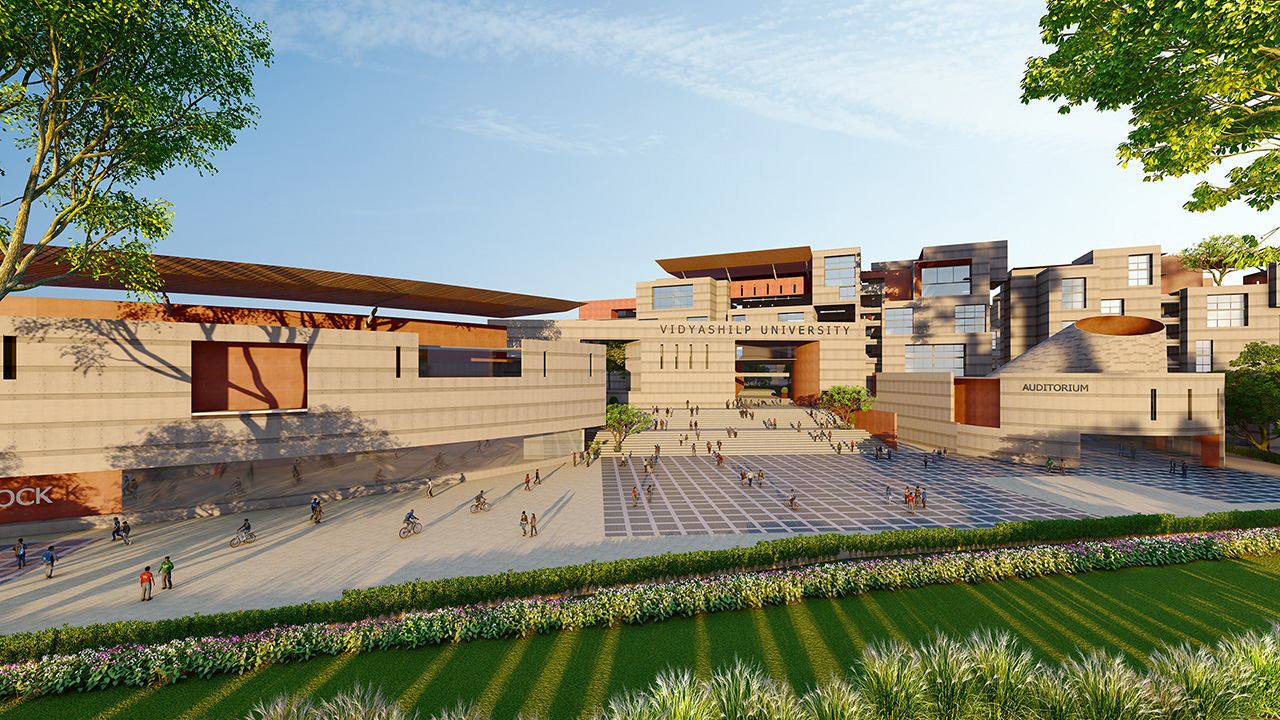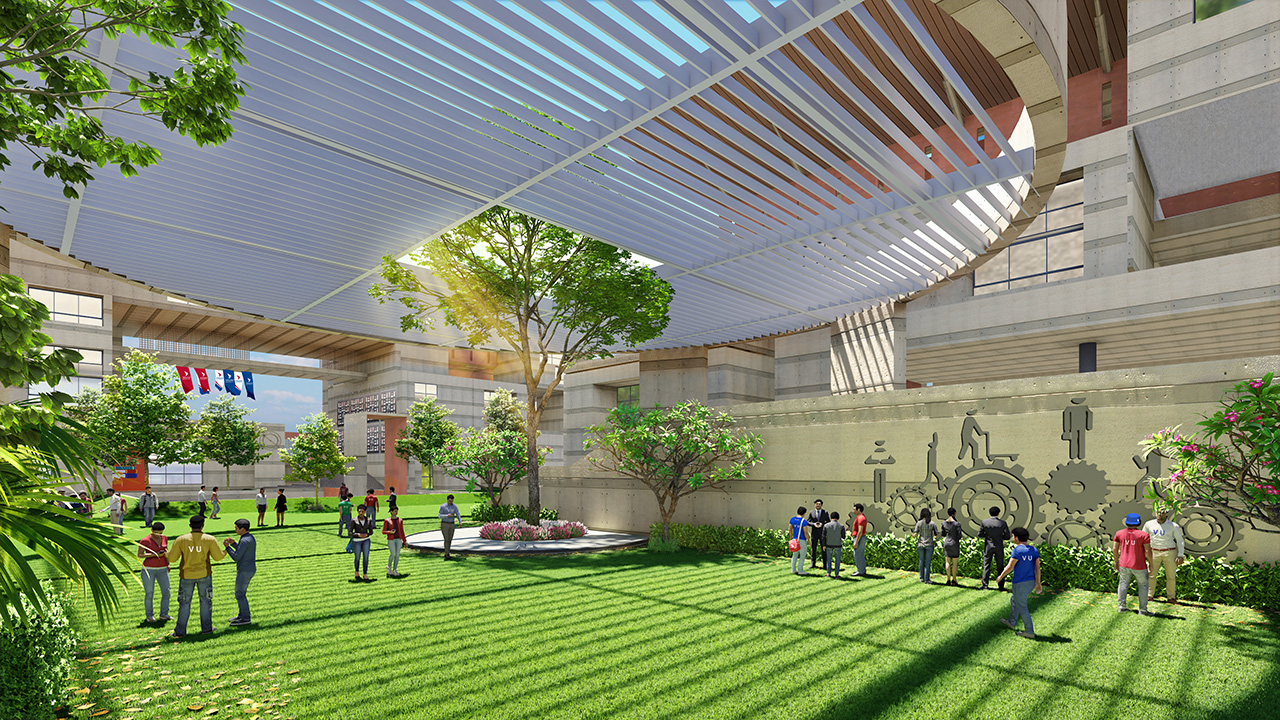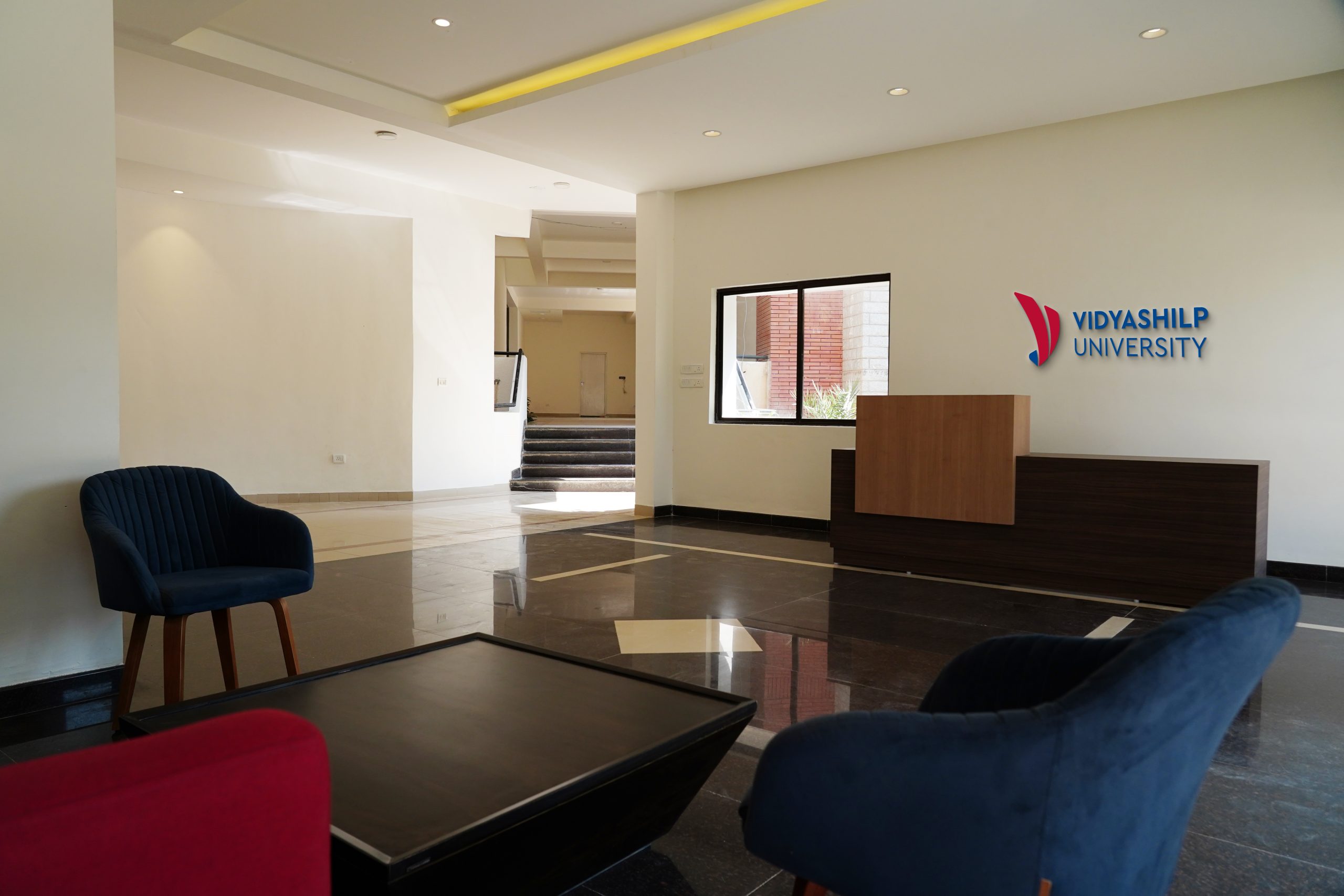It is the best time to be a designer
Meet the Author
PROF. Arvind Lodaya
School of Liberal Arts and Design Studies,Vidyashilp University
Prof. Arvind's expertise lies at the intersection of Creative Direction and Design Education. He is an alumnus of NID Ahmedabad and has worked extensively in innovation, design and branding. His previous academic experience includes Dean (Research) at Srishti, where he was also the first HP Labs-Srishti Research Chair. He was also a Visiting Scholar at the University of Gothenburg, Sweden, and an academic mentor for various assignments at IIT-G, ISB Hyderabad, Stellenbosch University, South Africa, IIT Mandi and Ambedkar University Delhi.
Earlier in his career as Creative Director at Ogilvy, he led the corporate rebranding for ICICI and strategic design assignments for well-known brands like Seagram, HL, Arvind, Lakmé, Godfrey Phillips, Cadbury etc.
DESIGN THEN AND NOW

THE IT-LED DESIGN EXPLOSION
While manufacturing was slow to accept design as a specialist input, the first big change to happen was the globalization of our economy - which led to international products becoming available in India, and stricter enforcement of copyright and patent laws, making copying a lot riskier than before. In certain segments like automobiles, safety regulations necessitated the ergonomic or 'human factor' redesign of products, coupled with the need to make vehicles look and feel very different from each other, and imbued with personality. This paved the way for design studios to being set up and designers getting hired. But the really big boost to design came from the IT boom. As internet and mobile usage rocketed, companies hired designers in droves to make their UI (user interface) distinctive, ergonomic and attractive. Why designers and not just engineers? Because although there was plenty of engineering involved, there was no physical production or manufacturing their product was digital and hence could be changed overnight just by rewriting the code. Designers, with their access to end-users, could use their artistic and psychological insights to come up with Uls that would appeal to ordinary folks with little technical sophistication or inclination. The features-obsessed approach of engineers gave way to the simplicity (think of Google), elegance (think of Apple) and whimsicality (think of Nike) that designers could bring. In the last two decades, design has won a seat in the boardrooms of most companies, small or big, across all sectors, not just IT. Its ultimate validation is surveys done on stock values of companies that show that those that are 'design-led consistently demonstrate higher growth rates and stock value jumps than those that aren't.
CONTRAST THAT WITH TODAY, WHEN FRESH-OUT-OF-SCHOOL DESIGNERS ARE SNAPPED UP BY BIG ESTABLISHED CORPORATIONS AS WELL AS STARTUPS WITH EQUAL EAGERNESS, AND OFFERED ATTRACTIVE STARTING SALARIES ALONG WITH STOCK OPTIONS OR OTHER PERKS. HOW DID THIS HAPPEN?
OVER TIME, THIS CRYSTALLIZED INTO DISTINCT LANGUAGES' OR VISUAL SYSTEMS, WHICH USERS GOT ACCUSTOMED TO OVER TIME, LEADING TO THE AXIOM "YOU DON'T LOVE/HATE YOUR (SMART) PHONE, YOU LOVE/HATE YOUR (MOBILE) UI. HOW DID THIS HAPPEN?
MAKING THE INTANGIBLE TANGIBLE
As the global economy began to shift towards digital value-creation, the very notion of a 'product' began to change. From the solid, physical and material dimensions that defined it earlier - and defined its design and market value - it was now ephemeral, nothing more than an algorithm processing data in real time, typically drawing on the internet. This lifted physical constraints on its design and opened up the scope to anything that designers could imagine or dream up of. If you see early designs of OS's, you will see very different approaches as designers strived to capture the attention of users away from their competitors. Over time, this crystallized into distinct languages" or visual systems, which users got accustomed to over time, leading to the axiom "you don't love/hate your (smart)phone, you love/hate your (mobile) UI". Of course, this is not to say that the material economy disappeared. On the contrary, ever-new and ever-improved goods kept joining the market - only, most of them were now being made in/by China. This again led to the increase in importance of design, as 'white-labeling' enabled competitors to have identical products with only the label being different-thus necessitating coming up with new and unique designs year after year. However, with the ubiquity of mobile phones and internet, we could now search, find, buy, return, resell and repair products at our fingertips. We now engage with the entire world through the small device sitting in our purse or pocketEXTENDING PRODUCTS TO SERVICES
As IT transformed sector after sector, it generated a revolution in how businesses were organized, operated and even made money. A whole category of business arose which did not produce anything but merely aggregated and optimized information (about commodities and goods), and served it in customized ways to a huge consumer base-at much lower cost than conventional means. This, along with increasing environmental concerns, led to entrepreneurs offering only the functionality of product to prospective customers rather than products themselves- for example, car leases in lieu of car purchase. It meant customers could have a car for a monthly rental, it would be serviced and maintained by the leasing company, they could return it or exchange it for another model instantly, and they didn't have to worry about getting rid of it when migrating to a new model. The leasing company also offered chauffeuring packages, fuel discounts and shopping & vacation tie ups, if you wanted. What this meant is that a whole 'service package' replaced the previous 'product' offering - with more conveniences for the customer, and more business for the leasing company and its associates.

THE SUPREMACY OF EXPERIENCE
From its humble origins in the early 20th century, Industrial Design has morphed into a huge diversity of specializations today, and as the illustration above shows, it is continuing to grow and evolve all the time. (Note: the illustration shows not only current but also potential design specializations of the future, as speculated by SAP thought leader Tyler Nickerson Today, it has arrived at "Experience Design". This, abbreviated to XD, is the aggregation and integration of all the specializations into one composite framework-which was enabled by shifting the focus from industry/business vertical or material or technology to the human user or consumer. "Experience" is how we sense and deal with the world, and it encompasses everything that our reality comprises of information, products, habitat, interaction, ambience and anything else that you can think of. So, XD can be thought as the composite/sum total of all the subdisciplines working together to deliver value to us. And since digital technology and mobile devices are currently our default mode or control centre to deal with the world, it has assumed the central role in Experience Design, in the form of User Experience or UX Design. You can think of UX Design as Experience Design packaged and presented through digital devices. The day we switch from mobile phone to say) VR headsets or Alexa-type voice assistants, UX Design would need to duft emphasis from screen and touch based interaction to the new technology.DEMATERALIZATION TO SAVE THE PLANET
Even as we scale new heights in terms of devices and technologies that extend our capabilities beyond anything in the past and make our lives ever more convenient, the invisible flipside to this is also worth being concerned about - and that is the rapid destruction of our natural environment and planetary ecological resource. It is glaringly evident more than ever before that the production of stuff needs to come down steeply, if not stop altogether. On one hand, our natural reserves are being depleted faster than ever, while on the other, the quantum of waste being created and dumped into our lands and rivers, oceans and even atmosphere is growing at an exponential rate.BY REPLACING PHYSICAL WITH DIGITAL, WE MAY BE ABLE TO REDUCE THE OVERALL ENVIRONMENTAL IMPACT.
While scientists, technologists and policy-makers try to find a painless way to transition from our current mode of existence to a more sustainable and un-destructive one, designers too are trying to come up with alternative strategies to make stuff and deliver value with the minimum impact on the environment and one strategy is 'dematerialization' or 'servitization. We touched upon this briefly in the car leasing example above, but the real test will be if this concept gets adopted widely and actually results in lowering the rate of destruction of our environment. Other strategies such as circular economy, recycling/upcycling, design for reuse and so on are also being explored and tested out for their value as well as environmental impact.
EXPERIENCE IS HOW WE SENSE AND DEAL WITH THE WORLD, AND IT ENCOMPASSES EVERYTHING THAT OUR REALITY COMPRISES OF
DIGITAL INNOVATION AND START UPS
The unleashing of enterprise and innovation by the mass shift from physical to digital production and value creation has led to an explosion in digital innovation and entrepreneurship. Clever business models coupled with smart technology innovation are ‘disrupting’ traditional ones, and making them go obsolete within months. This shows the revolutionary power of digital disruption and innovation, and it’s not over yet, because now, smart designers are joing starpsins” team members, even co-founders in many cases Conversely, stattup founder e Window are learning and adopting design thinking in their core business model.

GIGA MAPS TO BEHAVIOUR CHANGE
As design gets into the driver’s seat in more and more verticals – or cross vertical disruptors as illustrated – it is also pushing the envelope of future innovation and impact for not only business but also governance and civil society. For example, ‘systemic design’ is extending design approaches and methods to complex problems and challenges, bringing aids to visualization and transformation planning such as giga maps’ – colossal maps of complex and dynamic reality represented as systemic processes or phenomena including each & every element and factor in the system. Coupled with speculative disciplines like scenario modelling, systemic design is enabling policy makers and other high-level regulators to create various informed simulations of future conditions, and plan for each contingency better and better.
Another such frontier is using design as a strategy to change mass/public behaviour in a voluntary, non-coercive and enlightened way. This is of special importance to governments, civil society and other public or mass-level impact or service organizations.
THIS IS PERHAPS THE BEST UNDERSTANDING OF DESIGN SHOWN BY A VISIONARY – WHERE DESIGN IS NOT SEPERATE FROM “EFFORTLESS TO USE/OPERATE AND PERFORMANCE THAT MEETS ALL EXPECTATIONS” -THAT GAVE BIRTH TO THE TERM ‘INTUITIVE’.
SALUTING STEVE JOBS
All said and done, credit for the global success of design must go to Steve Jobs, the co-founder and long-time CEO of Apple. He was a champion of design in his organization, even though he says in a 2002 video that he never talked of it as distinct from how things ought to work. This is perhaps the best understanding of design shown by a visionary – where ‘design’ is not separate from “effortless to use/operate and performance that meets all expectations” – that gave birth to the term ‘intuitive to describe superlative design that does not require any effort on the part of the user to figure out how to use something, and delivers unerringly just the performance that s/he expects of the product s/he is using.
STUDYING TO BE A DESIGNER
It seems counter-intuitive that a subject that took nearly six years to learn three decades ago, which has grown exponentially in its scope and sophistication in this period, should now be taught in just four years (in some cases, even less). What’s largely unknown and uncredited is that design educators now know a lot better what to focus on in the classroom and what is best for the student to learn in the real-life world of work. We can now pinpoint just the right foundational cognitive abilities, quality values & attributes and skillsets that underpin design regardless of its application context, and how to equip students to be change-sensors and lifelong-learners. We have also learnt that excessive investment in particular technologies or media carries the great risk of obsolescence in a fast-changing environment. What makes for enduring learning is the combination of core capabilities along with the ability to learn anything in a short time and in sufficient depth to make a positive impact – a mix that’s perhaps unique to design education. Eminent futurist Yuval Noah Harari has said that in a world that’s going to be rapidly-changing and disruptive, only two things will matter-knowing oneself, and being able to learn fast and adapt to change. Design education has always stressed on these qualities, and has become even better at it through its unprecedented success in history.


